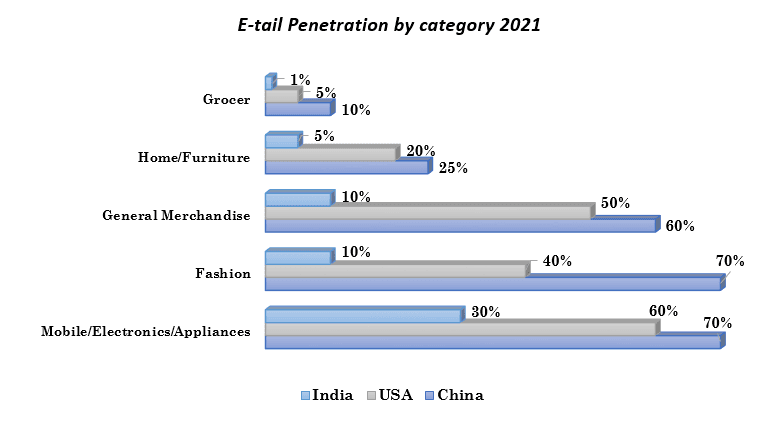报告要点:
- 各公司正寄希望于乙烯在不同行业的广泛应用,包括包装、建筑、汽车、电子等,从而增加了对乙烷的需求,因为乙烷主要用于乙烯合成和全球范围内的乙烯基产品生产。
- 在全球范围内,低密度聚乙烯的普及率持续增长,为其细分市场的参与者带来了巨大的增长潜力,其用途和规格具有多功能性,与任何其他原材料相比都无可比拟。
- 不断增长的包装行业,伴随着有组织的零售、品牌推广和全球范围内蓬勃发展的电子商务,正在扩大市场中乙烯基产品增长的范围。
根据Univdatos Market Insights的一份新报告,全球乙烷市场,预计到2030年将达到173.6亿美元,复合年增长率接近4%。乙烷是从气体精炼或天然气处理中产生的副产品,乙烷的主要需求来自于其作为蒸汽裂解装置的原料用于乙烯生产的单一用途。此外,由于其低温柔韧性、韧性和耐腐蚀性能,低密度聚乙烯(LDPE)的使用也在增加。此外,它们无毒、无污染,并具有抗冲击、防潮、耐化学品、抗撕裂和抗应力开裂的特性。近年来,由于其在许多行业中的应用,例如制造包装、垃圾桶、地砖、邮寄信封和滴管瓶,对LDPE的需求急剧上升,这反过来又提高了市场对乙烷的需求。此外,由于其电气绝缘特性,低密度聚乙烯在市场上的使用正在增长,这导致其在世界各地的各种最终用途领域中的应用不断增加。报告显示,乙烯基产品在包装行业中的日益普及是推动未来几年全球乙烷市场的主要因素之一。乙烷市场已分为乙烯合成、乙酸合成、制冷剂和其他(汽车燃料、洗涤剂和科学研究)。乙烯合成占据了大部分市场份额,并产生了对乙烷的最大需求。乙烯需求增长的主要地区是聚乙烯需求的激增。聚乙烯类别可以进一步细分为高密度聚乙烯(HDPE)和低密度聚乙烯(LDPE),预计在预测期内LDPE将见证更高的应用。这主要是由于薄膜和薄片在包装行业中的使用不断增加。LDPE用于生产食品和非食品包装,并且正在增加。此外,全球范围内蓬勃发展的电子商务极大地推动了对包装行业的需求,这提高了对乙烯的需求,进而推动了全球对乙烷和乙烷基产品需求的增长。

除此之外,乙烷是一种天然存在的制冷剂,与由氯氟烃(CFC)和氢氟碳化合物(HFC)制成的常用制冷剂相比,对臭氧层没有任何不利影响。乙烷基制冷剂正被广泛用于减少全球变暖和减少臭氧层损耗,由于全球快速的城市化和工业化,对空调的需求正在呈指数级增长。因此,所有这些因素都在促进市场的增长。该领域已采用了广泛的投资和战略联盟,这表明了巨大的潜力。最近的一些投资和战略联盟是:
- 2023年3月,Braskem Idesa宣布在墨西哥Coatzacoalcos港口开始建设价值4亿美元的乙烷码头,与荷兰液体储存物流公司Advario合作。
- 2023年1月,卡塔尔宣布了石化领域最大的一笔60亿美元投资,这是十多年来的首次直接投资。拉斯拉凡石化综合体预计将于2026年开始投产,该综合体包括一个年产能为210万吨乙烯的乙烷裂解装置。占地435英亩的项目场地还包含两个聚乙烯生产线,总产量为每年170万吨高密度聚乙烯(HDPE)聚合物产品,并将使卡塔尔的整体石化生产能力提高到每年近1400万吨
- 2023年5月,GAIL India Ltd.宣布计划在印度西部建造一个价值49亿美元的乙烷裂解装置。根据印度的顶级炼油商的说法,预计到2040年,对石化产品的需求可能会增加两倍,因此迫使在该领域运营的公司进行大规模投资,以建立新的设施,从而为满足预期的未来需求做好准备。
预计全球乙烷消费量将很快扩大,其中大部分需求和消费主要由新兴市场的增长需求驱动。对乙烷的需求将主要受到聚乙烯基消费品、PET纤维、瓶子和包装需求的增长以及建筑中PVC需求的增长的推动。
在此处下载战略样本PDF-https://univdatos.com/get-a-free-sample-form-php/?product_id=46347
“预计到2027年,中国大陆将凭借其不断壮大的中产阶级和快速发展的基础设施,占据新的乙烯需求的高比例。”
乙烯生产可持续性趋势正在市场中迅速获得发展势头
乙烷的主要价值仍然在于乙烷作为石化原料的全球应用,数十亿美元的资本支出正被用于乙烷裂解装置的开发,以生产乙烯。此外,由于乙烷是一种天然气,其温室气体排放量有限,并且世界正面临气候变化和环境退化的挑战,可持续乙烯生产已成为一个对生态友好未来的希望灯塔。这项创新技术利用风能、太阳能和生物质等可再生能源来生产生物乙烷,然后将其用于乙烯合成,乙烯是塑料和其他材料的关键组成部分。随着政府和企业同样优先考虑可持续性和减少碳足迹,对可持续乙烯生产的投资正在获得巨大的发展势头。需求主要受到包装、汽车和建筑等行业日益增长的需求的推动。随着迈向更绿色未来的竞赛加剧,可持续乙烯生产将在塑造更美好的明天方面发挥关键作用。”。除了这些政府举措外,一些能源和电力公司也在增加参与,为其创造合适的环境,从而推动该细分市场在未来几年的增长。

有关该报告的详细分析,请点击链接-https://univdatos.com/report/ethane-market
结论
乙烯的年产量超过1.4亿吨,是迄今为止用于生产约一半塑料的最大散装化学品(按体积计)。由于新兴经济体的增长,乙烯的需求预计将继续上升,这反过来又使乙烷行业受益,并推动市场对乙烷的需求增加。目前,几乎所有乙烯都源自石油衍生物,但生物质也可用于生产乙烷,然后用作生产生物乙烯的原料。乙烯和生物乙烯在化学上是相同的,因此现有的设备和生产能力可用于生产塑料或其他下游商品。截至目前,巴西和印度的第一批生物乙烯工厂约占全球乙烯产能的0.3%,最大的工厂每年生产约20万吨生物乙烯。尽管如此,全球生物聚合物生产市场正在迅速扩张,并且正在建设或规划多个生产工厂(例如,海湾沿海地区有七个裂解装置正在建设中,并且已经宣布了更多)。
获取回电
